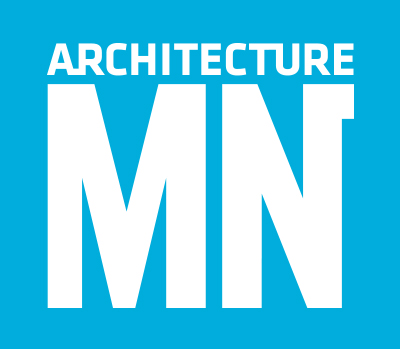The first phase of Catholic Charities’ impressive new housing and social-services center nears completion thanks to a powerful public–private partnership
By John Reinan
In the heart of downtown St. Paul, the Dorothy Day Center has long been known as a source of shelter and support for the city’s homeless community. But it’s also known as a building that’s obsolete for its purpose and desperately overcrowded, with guests sleeping nearly shoulder-to-shoulder on thin mats on a cold concrete floor.
Happily, the accommodations for Dorothy Day guests are about to change. The city of St. Paul and the center’s owner, Catholic Charities of St. Paul and Minneapolis, are building a facility in two phases that’s bigger—and much, much better. With an estimated price tag of $100 million, the ambitious remaking of the Dorothy Day Center into Higher Ground St. Paul (phase 1) and the St. Paul Opportunity Center and Dorothy Day Residence (phase 2) is the largest public-private social-services partnership in Minnesota history. The two buildings will together form Dorothy Day Place.
The city is happy to have the new center as its welcoming western face, says St. Paul Mayor Chris Coleman. “This goes back to a longstanding ethos in St. Paul, which is: We’re not hiding the fact that people are living on the streets. We don’t tuck them away and hide the problem,” Coleman explains. “We want to be a community that treats the homeless with respect and gives them the support they need to be successful.”
The attractive building now taking shape—Higher Ground St. Paul—is evidence, in concrete and steel, of the power behind that pledge. “Locating the facility in the shadow of the cathedral and the capitol, and in the gateway to downtown, was a tremendous design challenge,” says Tim Marx, CEO and president of Catholic Charities of St. Paul and Minneapolis. “It’s been a fascinating and affirming experience.
“Sometimes we want to be shy and timid, and not think big,” Marx continues. “In this effort, in the heart of St. Paul, we put all of our hearts and minds and souls into it. And we hope to inspire others to do things they might not otherwise do.”
The first major piece of the center’s rebirth is expected to open at the end of 2016. Higher Ground St. Paul—an L-shaped, five-story building with green roofs and an inviting courtyard—will provide overnight shelter for nearly 200 guests, and transitional and permanent housing for nearly 200 more. Modeled after Higher Ground Minneapolis, a smaller project, the St. Paul facility is an architectural representation of the path out of homelessness to hope and permanent stability.
“Higher Ground Minneapolis proved so successful both for staff operations and for clients’ transition out of homelessness that we applied the same model here in St. Paul: Each level has an increasing degree of privacy, from the shelter-room bunks on the first floor, to the slightly more enclosed pay-for-stay bunks on the second, to the individual sleeping rooms above,” says Cermak Rhoades Architects’ Todd Rhoades, AIA, whose firm designed both buildings. “As clients move into and up through the building, they develop more independence and security in their living situation.”
Residents who qualify for permanent housing in the facility will climb to higher ground via a transparent stairwell leading to the upper floors, where longer-term residents will be housed. In fact, Catholic Charities and Cermak Rhoades sought, through generous glazing, to make the entire building unusually transparent, to blur the distinction between indoors and out.
That theme is developed further in a series of outdoor “rooms” around the courtyard. Sheltered by the building, the courtyard encourages interaction with the site while also providing a measure of privacy for the residents, many of whom prefer to spend the majority of their time outdoors. That and other ideas came from first-hand information gathered by the design team. “Our team members volunteer at the Dorothy Day Center to interact with residents and see how the building needs to function,” says Rhoades.
Phase 2 of the project will add job training, veterans services, financial services, and physical and mental health support, as well as additional housing. Construction on the St. Paul Opportunity Center and Dorothy Day Residence is set to begin in spring 2017, with completion by the end of 2018. Both phases will contribute to the city’s ongoing efforts to reconnect to the river, says Rhoades, as well as provide a green connection to the hilltop neighborhoods through a series of street plantings.
The entire community came together to make the project possible, says Coleman, who voices special praise for the leaders of business institutions such as Ecolab, HealthPartners, U.S. Bank, Target, and 3M. The Wilf and Pohlad families are also significant donors to the project. “The top leadership of our corporate community is amazing,” says Coleman. “They wrote huge checks, both corporate and personal. They gave of their time. They lead by example, and they pass that spirit down to all levels of their corporations.”
Coleman says the new, larger complex will give a crucial boost to one of the city’s key social goals: ending veteran homelessness. “This facility allows us to do that,” he says. “The old facility was not conducive to putting together long-term strategies. Now there is a pathway off the street. Overnight shelter can lead to temporary supportive housing, which can lead to permanent supportive housing.”
The name Higher Ground was taken from an old spiritual, Marx notes, and the result is a project “that shows a community willing to step up and care.
“We had a facility that was designed for something other than what homelessness came to be,” he adds. “We needed a new plan, and the entire community has invested its heart and soul and treasure in us.”
HIGHER GROUND ST. PAUL (PHASE 1)
Location: St. Paul, Minnesota
Client: Catholic Charities of St. Paul and Minneapolis
Architect: Cermak Rhoades Architects
Principal-in-charge: Terri Cermak, AIA
Project lead designer: Todd Rhoades, AIA
Landscape architect: Coen + Partners
General contractor: Watson–Forsberg Company
Size: 111,261 square feet
Cost: $40 million
Completion: November 2016


